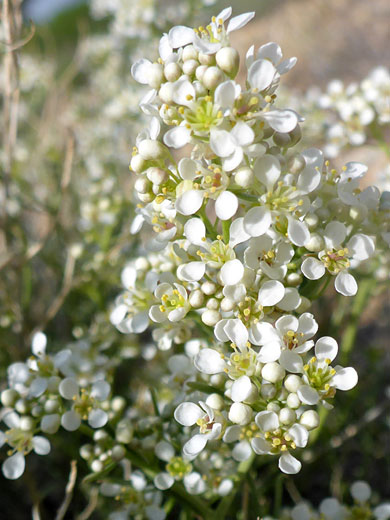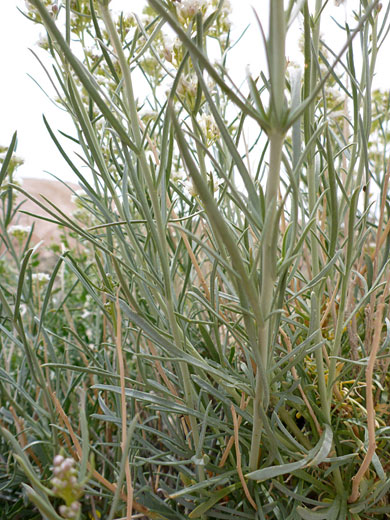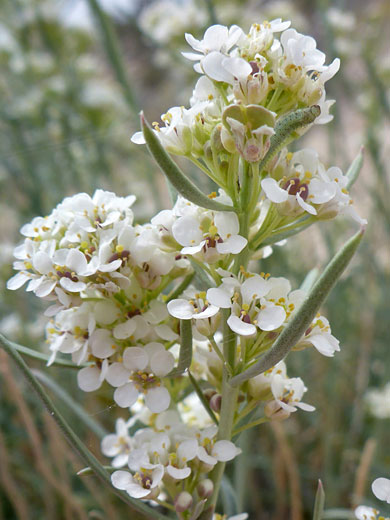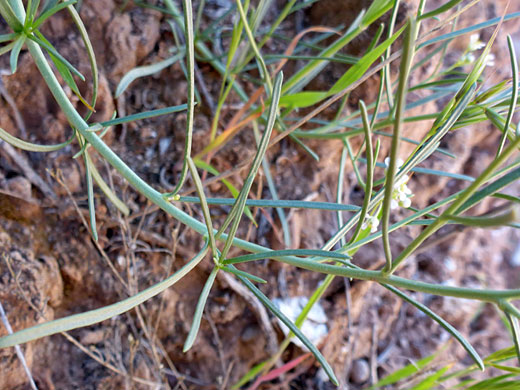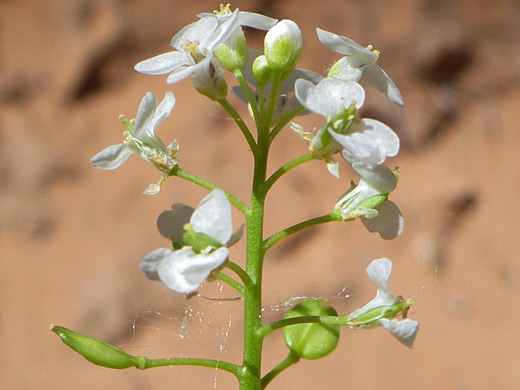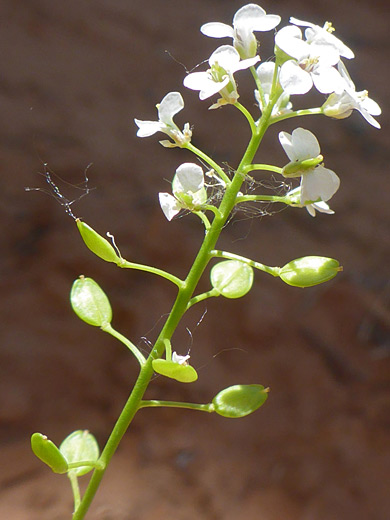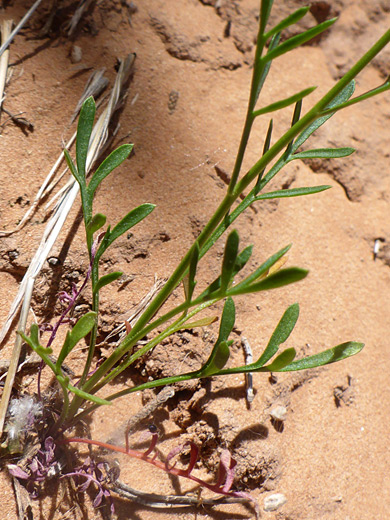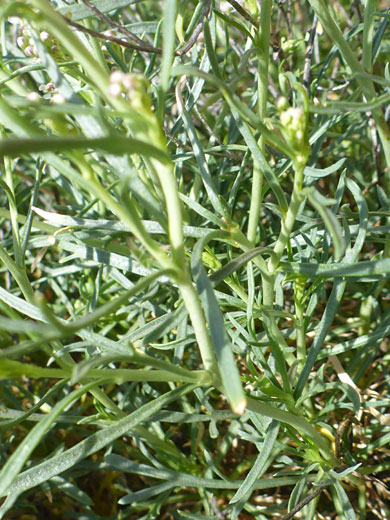Common names:
Desert alyssum, Fremont's peppergrass, desert pepperweed
Family:
Scientific name:
Lepidium fremontii
Main flower color:
Range:
South California, northwest Arizona, most of Nevada
Height:
Up to 3 feet
Habitat:
Desert locations; sandy flats, hillsides, sagebrush environments
Leaves:
Linear, very narrow, up to 3 inches long; those towards the base of the stems are pinnately lobed
Season:
March to June
Individual white-petaled, yellow-centered flowers of lepidium fremontii are tiny, about 1/4 inch in diameter, but they form dense, spherical or elongated clusters, on a shrub-like plant which is unremarkable for much of the year when not in bloom but quite distinctive in spring and early summer. Flowers are formed of four obovate, yellowish-green sepals and four larger, white, clawed, spatula-shaped petals, non-overlapping. All plant parts are hairless. Stems and leaves are greyish-green in color; leaves grow all along the stem, though not at the base.
The range extends from the Mojave Desert northwards across most of Nevada, up to 6,500 feet elevation. Plants branch profusely, generally staying quite close to the ground but reaching heights of 3 feet in favorable locations.
The range extends from the Mojave Desert northwards across most of Nevada, up to 6,500 feet elevation. Plants branch profusely, generally staying quite close to the ground but reaching heights of 3 feet in favorable locations.
All Contents © Copyright The American Southwest | Comments and Questions | Contribute | Site Map



